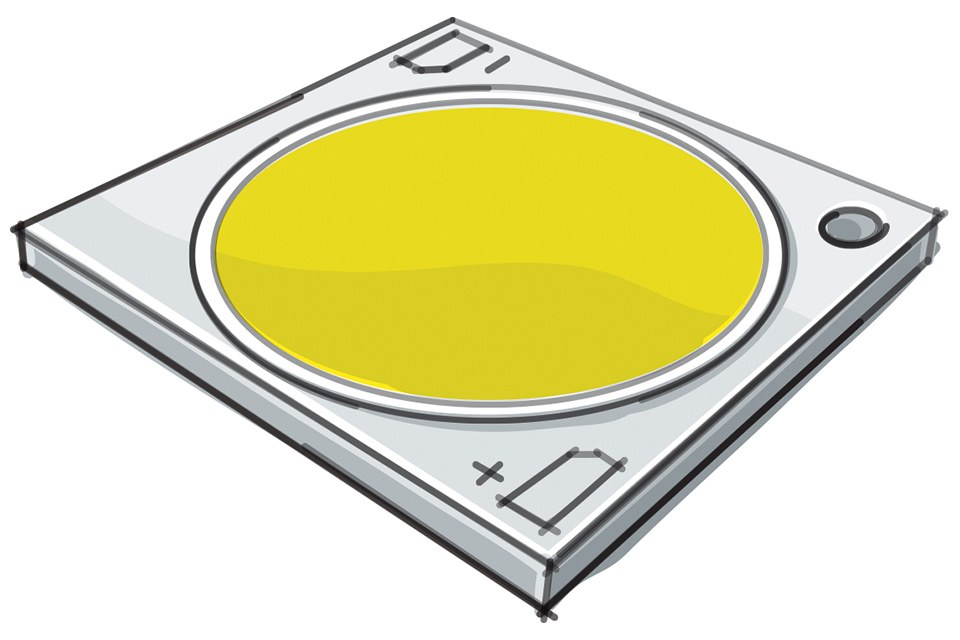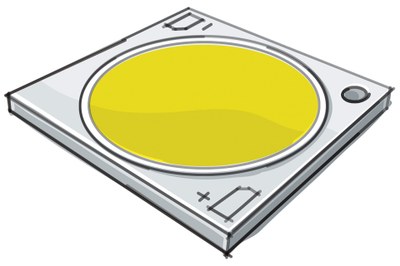Zhaga Consortium Starts Work on New Specification for COB LED Arrays
In response to feedback from a broad range of stakeholders, the Zhaga Consortium, which develops specifications for interchangeable LED light sources, is now working on a new Book that will include Chip-on-Board (COB) LED arrays. The new Zhaga Book will specify a family of six rectangular or square LED modules with different dimensions.
COB arrays are already in widespread use throughout the LED lighting industry, but different manufacturers offer a wide range of alternative sizes. This creates problems for luminaire makers and other stakeholders such as COB holder suppliers, and limits their options to use alternative products from different suppliers without changing their luminaire or holder designs.
“We consulted many luminaire makers, and received broad support for our plans to standardize this type of LED light source,” said Musa Unmehopa, Secretary General of the Zhaga Consortium. “These companies asked us to standardize properties such as the mechanical dimensions of the module, the position of electrodes, and the diameter of the light-emitting surface.”
Zhaga standardization removes arbitrary variations in a small number of parameters, in order to enable interchangeability of LED light sources. For customers, this simplifies the comparison and selection of products. For COB-array makers, this will allow a focus on areas where they can offer value-added differentiation to customers, such as thermal properties, quality of light or luminous efficacy.
“For Zhaga Books to be successful, they need to reflect the wishes of the market,” said Unmehopa. “We welcome any input from COB makers or other companies, who are invited to join Zhaga and contribute to the ongoing discussions.”
Specification details
The new Zhaga Book will define LED light engines comprising rectangular and square LED modules with a circular light-emitting surface (LES) and a separate LED driver. The Book will define a family of modules with different dimensions.
In the majority of cases, modules that are compliant with the new Book will employ COB technology* for the light-emitting section. However, the Zhaga specification will not prevent the use of alternative technology approaches.
To lay the groundwork for the new Book, Zhaga analysed the main COB-array products on the market, and checked the requirements of luminaire makers. After extensive discussion it was decided to specify a family of six rectangular or square modules, with the following PCB dimensions: 12 x 15 mm, 16 x 19 mm, 19 x 19 mm, 20 x 24 mm, 24 x 24 mm, and 28 x 28 mm.
The circular LES sizes defined in the new Book will correspond to the LES categories specified in several current Zhaga Books that cover spotlight modules (Books 3, 5, 10 and 11).
COB LED arrays are used both with and without holders, depending on the luminaire type and application. It is likely that the new Zhaga Book will also include specifications for these holders.
In common with other Zhaga specifications, the new Book will only restrict the parameters necessary to enable interchangeability. In addition to PCB dimensions and thickness, such parameters are likely to include the location of the LES centre point; the position and size of the electrode positions; and the location of the thermal measurement point.
Screw holes will be optional, since many COB arrays are mounted directly using a thermal interface material. However, if screw holes are used then their position and size should conform to the Zhaga specification.
As part of the Book-writing process, Zhaga will discuss whether other features should be part of the specification. This may include the addition of a current-setting resistor to the board, for example, or the addition of a temperature sensor to prevent over-temperature operation.
For additional information and updates, please visit www.zhagastandard.org
About Zhaga:
Zhaga is a global lighting-industry consortium that is developing specifications to enable the interchange of LED light engines, modules and drivers made by different manufacturers.


